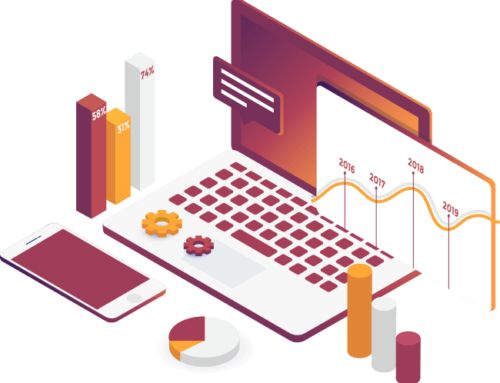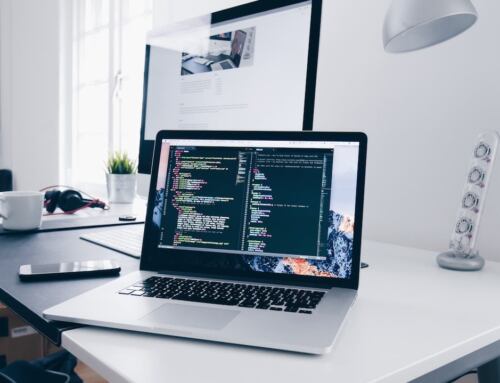Web design is constantly changing, and Nikita Abramenkov, Thorgate‘s design manager, talked about what is suitable for a website this year.
What are the design elements that every page should have in 2018 and that cannot be over or around?
In 2018, designers will definitely need to learn new skills and techniques. The coming year should prove even more that a designer is not just someone who can move pixels on the screen, but someone who can think broadly and create user experiences holistically.
Animations and microinteractions
The first thing to definitely start using to some extent is animations.
Namely, such animations that help users better understand the processes taking place on the screen. The simplest example would be if a user wants to add a product to his shopping cart while surfing an online store. In this case, after pressing the button, instead of the long text “The product has been added to the shopping cart”, you could instead animate the movement of the product image from its location to the shopping cart. Such animations and microinteractions will become the standard in the near future, replacing the old static pages.
Illustrations
Certainly, custom-made illustrations, which bring out the brand better and create a first impression, have started to play an increasingly important role. This trend has gained more and more foothold in recent years and will definitely gain momentum this year as well.
Illustrations are effective for explaining more complex and abstract concepts, and the increasingly complex products of the tech world need this kind of human touch. Many large companies that have adopted illustration language are already seeing results through how people perceive their product, such as Slack or Dropbox.
Gradients
Bold color solutions are the next trend this year. Vibrant gradients, or color transitions, commonly used as backgrounds, can help refresh your web page.
Simplifying shapes
The trend of simplifying shapes continues. Small decorative elements are used in branding, design and illustration. Geometry is becoming the new black, and it’s also coming out in the design of identities. More and more logos are simplified to the minimum, until abstract shapes remain.
Dropbox design.
But what are these old standards that should be forgotten by now?
.png + .gif -> .svg
A raster image format like png, which was very widely used for icons, will be replaced by .svg in 2018 (Scalable Vector Graphics)format. There are several reasons for this. First, more and more high-pixel-density screens are coming to the market, which creates the need to make the same .png icons in different sizes for different screens, but icons in .svg format can be stretched without losing quality. Second, .svg icons allow easier manipulations with them directly in software code, such as changing the color of the icon. Thirdly, the .svg format also supports animations and is much better in quality than the common .gif.
Flat design
The most popular design language “Flat design” that reigned a few years ago is now gone. Instead, the “Semi-flat design” is now in fashion, which uses the original simplicity of its grandfather, but also includes elements that add spaciousness.
Flat design/Vincent Tantardini ja Semi-flat UI/Jakub Kudelski/Netguru
But if you want to be different from the others, what path could you go this year?
Video backgrounds could be used bolder
An emotional video background is a good way to bring life to even the most boring web page in the world.
Use variable fonts
Despite the fact that dynamic fonts are not currently supported by all browsers, you could try using them to gain experience and prepare for the future.
Give users a say, too
Chatbots were undoubtedly one of the trends in user interfaces last year. This year they get a voice and start listening and responding to users. If the product focuses on searching for things, you could try to integrate voice-based search or other voice-controlled user interface elements.
VR experience online
Currently, you can buy aids that turn your smartphone into VR glasses for a fairly small price at almost any electronics store. However, the latest web technologies also support 3D VR image rendering directly in the web browser. A completely different e-store experience would be if, instead of scrolling the page, the user could turn his head around and choose products from the virtual counters around him.
In addition to the design, the overall user experience is also important: what should be especially noted about it this year?
Less focus on design, more on functionality
Good design does not always mean that the website is comfortable and easy to use. The biggest and most important part of good design comes from correct functionality and good user experience (UX). If the product looks fancy, but doesn’t follow the main goals of the user experience, it’s more like just artistic eye-candy.
Biometric identification
There are many biometric features that could be used in the new technological era – voice, iris scans, facial recognition, signature and other behavioral patterns specific to people. All of them have rapidly gained popularity and fingerprint identification is also gaining ground. Biometrics is good for its ease of use and simplicity and is becoming a technology standard in many apps.
The use of biometric features also helps to reduce the number of frauds and creates new security standards. Over the next few years, it will be interesting to see in which fields biometrics become standard.
Speed
Today, a very important part of the user experience of a website or application is speed. A digital product must be launched with the best possible optimized images, icons and code. Optimized details ensure faster and more convenient navigation on the website, which is part of the ideal user experience.
What are the pillars that you should definitely think about when creating a page, especially now?
Security (HTTPS, SSL)
As a service provider, you have to make sure that your customers’ sensitive information is protected and the connection is safe. One of the main ways to ensure this is to get an SSL certificate for your website, which encrypts and protects user information. The resulting https certificate also protects against phishing attacks, where someone tries to copy the web for malicious purposes. Its importance has increased with the information leaks of recent years, and protecting your products and customers is becoming the new standard.
Adaptive Design 2.0
In 2018, we have to take into account that even more devices with different screen sizes will come into play that allow web surfing: smart TVs, car media systems and displays with a 21:9 aspect ratio. All of them require a special approach. In general, this means that the upper limit of the adaptive design must also be correspondingly higher than before. Additionally, I would recommend trying a two-column layout for extremely extreme cases.
Accessibility
If the website is visited by people of all ages and with special needs, accessibility should also be considered. Good accessibility is ensured, for example, by the option of choosing the text size and line spacing. If older users can use a text size adapted to their eyes, their user experience will automatically be significantly improved.
In order to ensure better accessibility, it is also possible to hide the introductory text in the images, so that visually impaired people can assimilate the information in the image through text-speech synthesis.
The color-blind option is used to make the website as convenient as possible for color blind people. The color-blind option gives color-blind people the opportunity to optimize the colors that affect them according to their choice. For example, with one click, the colors of the buttons and texts of the entire web page can be changed to a different color for the color blind.
Personalization
A personalized approach has been introduced to ensure the best user experience and conversion. If the visitor reaches the service provider’s website through a search engine result, the appearance and content of the website can be changed according to the visitor’s question. Another option is to remember the user’s previous behavior and whether the user has visited the website before or is visiting it for the first time through the cookies of the web browser. For example, a user who has previously visited the website can be directly directed to make a purchase through personalization, because it is highly likely that the introductory information has already reached him during the first visit.
ARTICLE: https://www.veebimajutus.ee/blogi/veebidisain-trendid-2018






